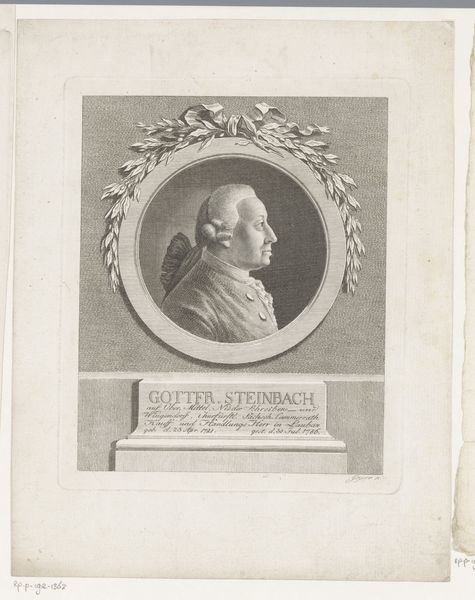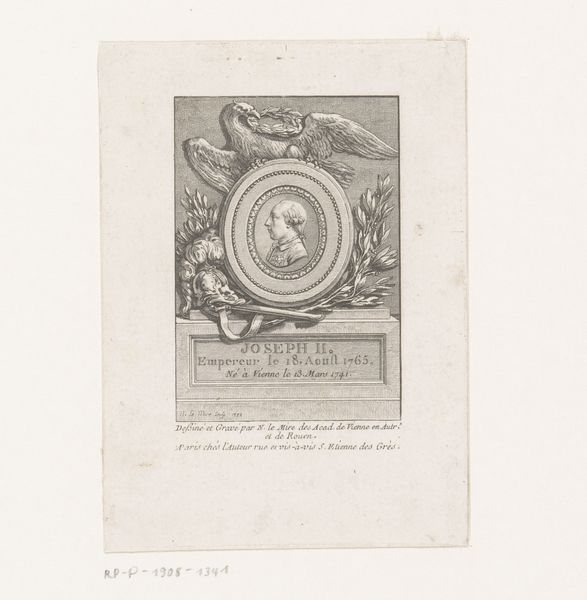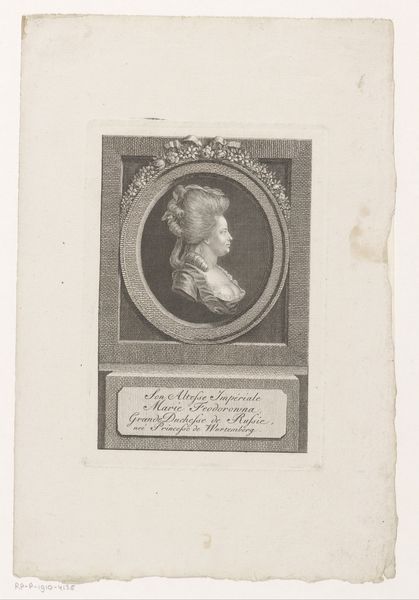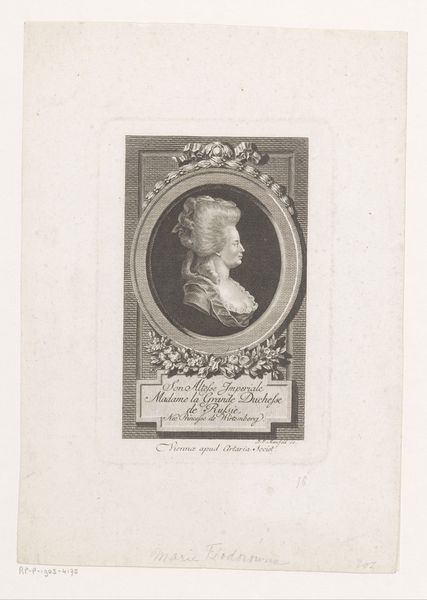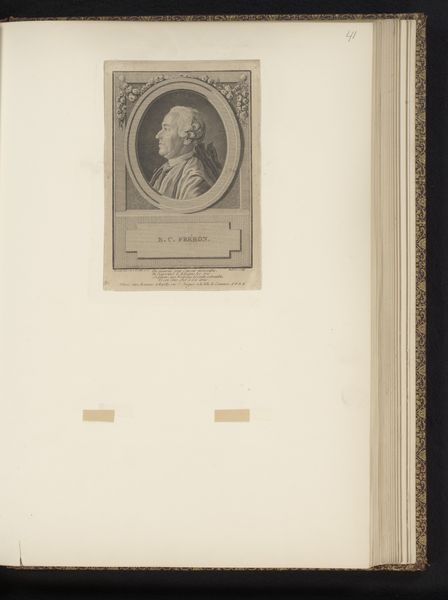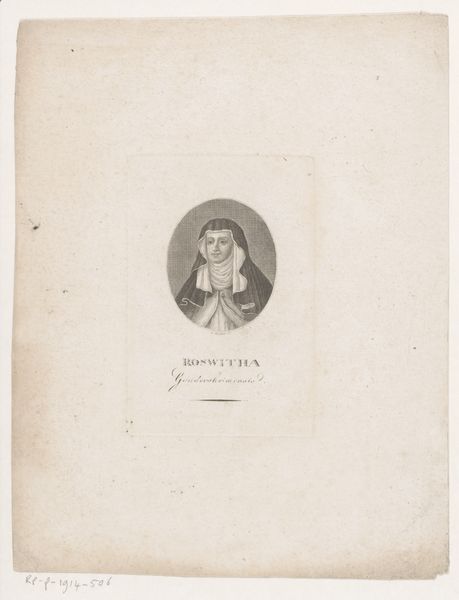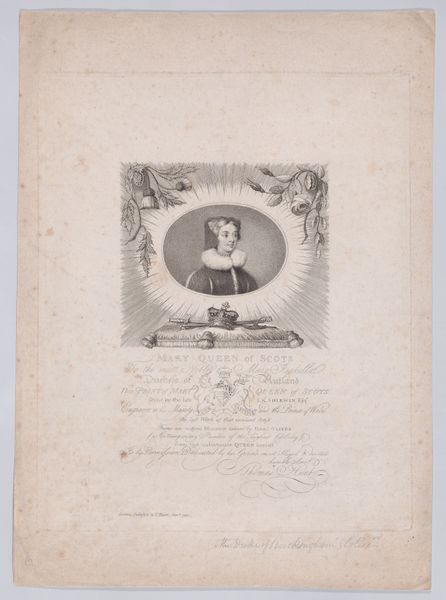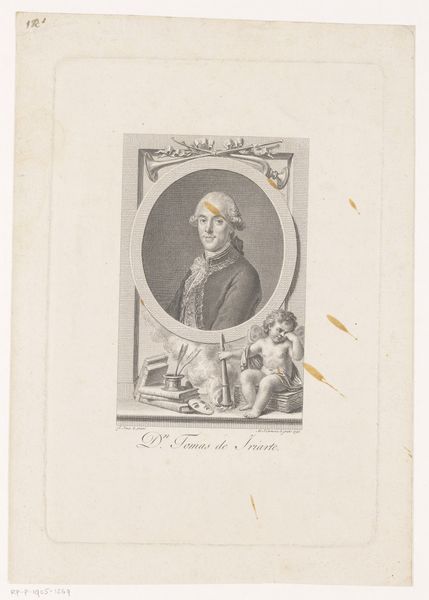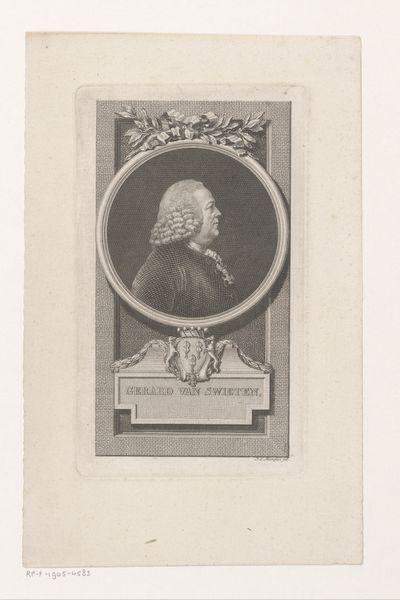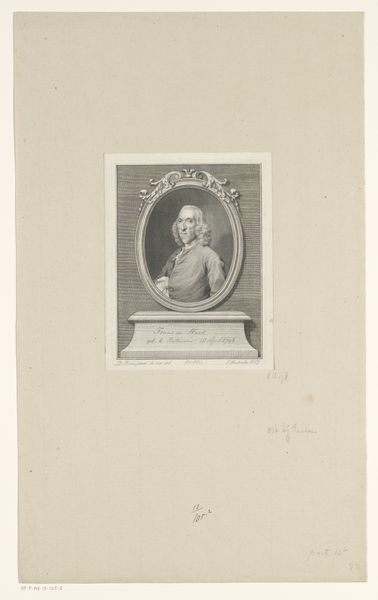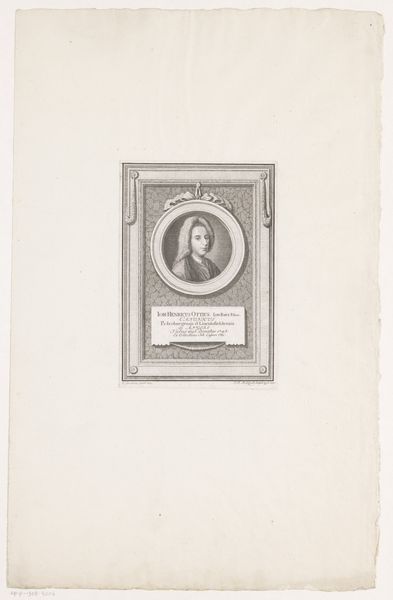
drawing, print, engraving
#
portrait
#
drawing
#
baroque
# print
#
old engraving style
#
personal sketchbook
#
england
#
history-painting
#
engraving
Dimensions: Plate: 6 7/16 × 4 1/4 in. (16.3 × 10.8 cm) Sheet: 11 7/16 × 8 7/8 in. (29 × 22.6 cm)
Copyright: Public Domain
Editor: Here we have "Maria Stuart Regina Scotiae," a print from 1721 by George Vertue. It's a Baroque portrait, an engraving of Mary, Queen of Scots. What strikes me is how the starkness of the engraving almost highlights the opulence of her attire. What's your take on it? Curator: It’s crucial to consider the mechanics of its production and the economic currents influencing it. Vertue, a key figure in the English engraving trade, created this during a period of burgeoning print culture. This wasn't just about representing royalty; it was about creating a commodity, replicable and distributable. Who was buying these prints and why? Editor: That's fascinating, so it's less about the subject and more about the…industry around it? Was Vertue mass-producing these? Curator: Not in the modern sense, but the very act of engraving allows for multiples. Think about the materials involved: the metal plate, the ink, the paper. These are tangible resources transformed through skilled labor. Consider the engraver’s workshop: what were the conditions like, what was the social status of the artisans involved? The print serves as a document of 18th-century manufacturing. How does the image of royalty influence labor of reproduction, though? Editor: I hadn't considered the economic implications of portraiture like this. It changes how I view not just this image, but all similar artworks! Curator: Precisely. It allows us to reconsider art history through production and consumption. This reveals much more beyond Mary’s iconic image.
Comments
No comments
Be the first to comment and join the conversation on the ultimate creative platform.
